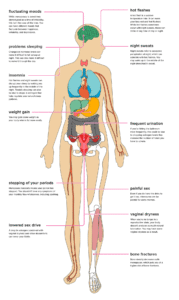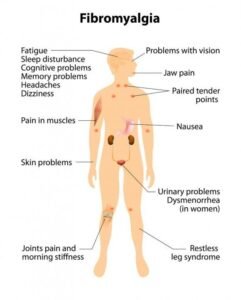Pelvic Pain in Men
Understanding Pelvic Pain in Men
Estimated Reading Time: 9 minutes
Pelvic pain in men can arise suddenly—such as from a kidney stone or strained muscle—or develop gradually due to conditions like prostatitis or a urinary tract infection (UTI). Other possible causes include hernias, bladder infections, or digestive issues. If you’re experiencing discomfort in the pelvic area, it’s important to seek medical advice promptly. While some causes are minor, others may worsen and lead to serious complications if left untreated.
Common Causes of Pelvic Pain Exclusive to Men
Pelvic pain in men typically involves discomfort in the lower abdomen or around the buttocks. Some conditions are unique to male anatomy and may present localized or widespread pain. The pain may feel sharp, dull, constant, or triggered by specific movements or actions.
Prostatitis: Inflammation of the Prostate
Prostatitis is one of the leading causes of pelvic discomfort in men and refers to inflammation of the prostate gland. It may be caused by a bacterial infection or inflammation without infection.
Common types of prostatitis include:
-
Chronic prostatitis/chronic pelvic pain syndrome (CP/CPPS)
-
Nonbacterial prostatitis (abacterial prostatitis)
-
Prostatodynia (painful prostate without infection)
In addition to pelvic pain, men may experience urinary symptoms or painful ejaculation.
Prostate Enlargement
Pelvic discomfort can also result from an enlarged prostate, which may be caused by:
-
Benign prostatic hyperplasia (BPH)
-
Prostate cancer
-
Prostatitis
An enlarged prostate can interfere with urination or cause general pelvic discomfort, even without noticeable symptoms.
Hernias That Can Cause Pelvic Pain
A hernia occurs when tissue pushes through a weakened area in the surrounding muscles. In men, two types of hernias often linked with pelvic pain include:
-
Inguinal hernia – a protrusion into the inguinal canal
-
Femoral hernia – a bulge through the groin region
These hernias may or may not cause symptoms but can lead to serious complications if untreated.
Chronic Pelvic Pain Syndrome in Men
Chronic pelvic pain syndrome (CPPS) in men can occur with or without known conditions like prostatitis or BPH. This type of pain can last for months and may have no obvious cause. It is typically diagnosed after ruling out other potential medical issues.
Testicular Torsion: A Medical Emergency
Testicular torsion is a rare but severe cause of pelvic pain. It involves twisting of the testicle, cutting off blood supply. Immediate surgical intervention is required—delays can result in loss of the testicle.
Additional Causes of Pelvic Discomfort in Men
Pelvic pain can also stem from non-gender-specific health problems, such as:
-
Muscle strain
-
Irritable bowel syndrome (IBS)
-
Sexually transmitted infections (STIs)
-
Urinary tract infections (UTIs)
-
Appendicitis
-
Kidney stones
-
Pelvic or bone cancers
When to Seek Medical Attention
Recurring pelvic pain linked to chronic issues like IBS may come and go. However, if you notice new or worsening symptoms, consult a healthcare professional promptly.
Seek medical evaluation if you experience:
-
Persistent or sudden pelvic pain
-
Fever
-
Frequent urination, especially at night
-
Pain or burning during urination
-
Groin or abdominal bulges
-
Rash or discharge
-
Blood in stool
-
Difficulty urinating or passing bowel movements
Symptoms Requiring Emergency Care
If you suspect testicular torsion, head to the emergency room immediately. Watch for signs like:
-
One-sided testicular swelling
-
Red or darkened scrotum
-
Nausea or vomiting
-
Sudden abdominal pain
-
Fever
-
Urinary urgency
How Pelvic Pain in Men Is Diagnosed
A thorough evaluation includes a medical history review, physical examination, and diagnostic testing.
What to Expect During Diagnosis
Your doctor will ask:
-
When did the pain start?
-
Is the pain constant or intermittent?
-
What makes it better or worse?
-
Have you had this type of pain before?
-
Do you have other symptoms?
Physical exams often involve gently pressing on the pelvic area and may include:
-
Digital rectal exam (DRE) to assess the prostate
-
Hernia checks
-
Prostate-specific antigen (PSA) test to evaluate prostate health
Lab and Imaging Tests
Depending on your symptoms, your doctor may order:
-
Urinalysis – to check for infections or blood
-
Blood tests – to detect inflammation or infection
-
X-rays, CT scans, Ultrasound, or MRI – to evaluate for kidney stones, tumors, appendicitis, or an enlarged prostate
Treatment Options for Pelvic Pain in Men
Treatment depends on the underlying cause. Options may include:
-
Pain relievers like acetaminophen or NSAIDs
-
Antibiotics for bacterial infections
-
Alpha-blockers such as tamsulosin (Flomax) for BPH
-
Muscle relaxants or Botox injections for bladder-related pain
-
Surgery for hernias or tumors
-
Lithotripsy or surgical removal for kidney stones
-
Chemotherapy or radiation for cancer
-
Pelvic physical therapy for chronic pain or post-surgery recovery
Frequently Asked Questions
What Is Testicular Torsion?
Testicular torsion is a condition where a testicle rotates, twisting the spermatic cord and cutting off its blood supply. It requires emergency surgery and should be treated immediately to prevent permanent damage.
Expert Tips
-
Stay hydrated to reduce the risk of kidney stones
-
Avoid heavy lifting to prevent hernias
-
Keep sexually transmitted infection risks low by practicing safe sex
-
Treat UTIs early to avoid complications
Key Takeaways
-
Pelvic pain in men can range from mild to severe and may indicate serious health concerns
-
Seek timely medical help to prevent long-term complications
-
Diagnosis typically involves physical exams, lab work, and imaging
-
Treatment varies based on cause and may include medications, physical therapy, or surgery
Join Our Health Community
Want to learn more about men’s health and wellness? Subscribe to our newsletter for expert tips, medical insights, and wellness advice.
Subscribe Now






